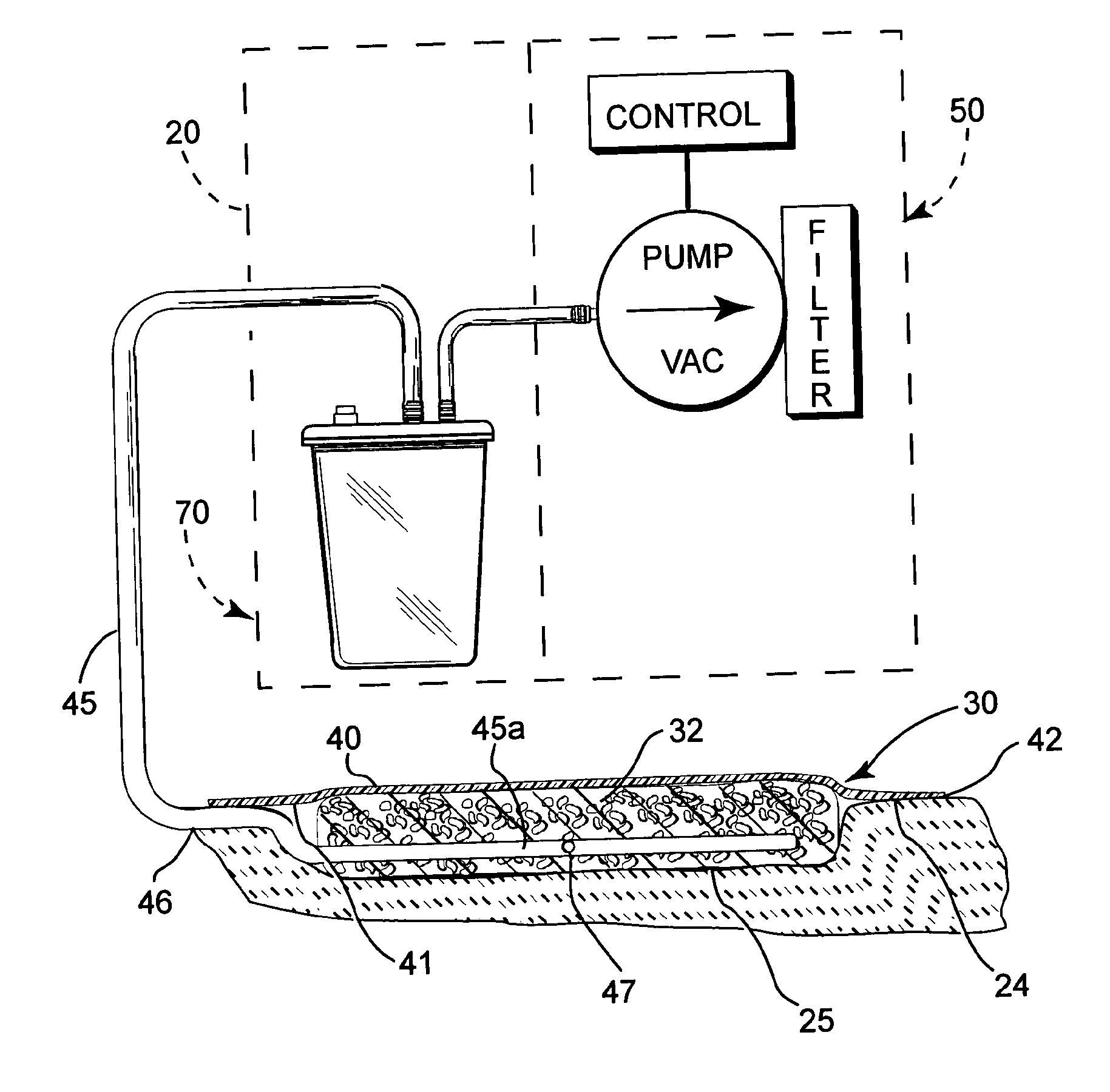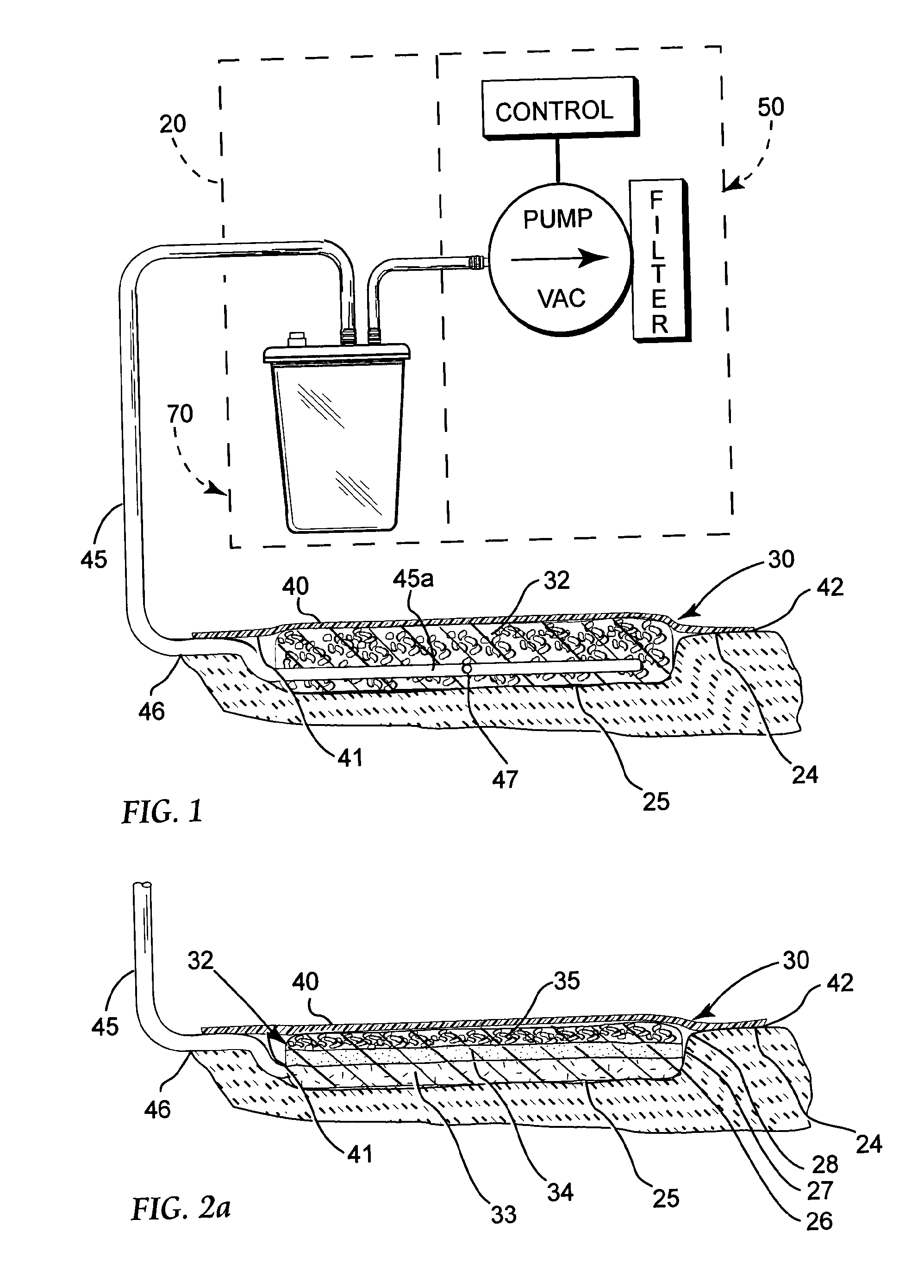Reduced pressure treatment system
a treatment system and pressure reduction technology, applied in the field of apparatus and a wound treatment method, can solve the problems of large or infected wounds, inability to spontaneously close, and inability to successfully fight bacterial infections, so as to reduce the pressure treatment of wounds, avoid contamination of the source, and reduce the effect of pressure treatmen
- Summary
- Abstract
- Description
- Claims
- Application Information
AI Technical Summary
Benefits of technology
Problems solved by technology
Method used
Image
Examples
Embodiment Construction
[0042]In accordance with the present invention, a wound treatment apparatus is provided for treating a wound by application of reduced pressure (i.e., below atmospheric pressure) so that suction may be applied to a wound site 25 in a controlled manner for a selected period of time. FIG. 1 schematically shows one version of the wound treatment apparatus, generally designated 20, which includes a reduced pressure appliance, generally designated 30, for enclosing a wound site 25 to provide a fluid-tight or gas-tight enclosure over the wound site 25 to effect treatment of a wound 25 with reduced or negative pressure. For the purpose of creating suction within the appliance 30, the appliance 30 is connected with a vacuum system, generally designated 50, to provide a source of suction or reduced pressure for the sealed appliance 30 at the wound site 25. Intermediate the appliance 30 and the vacuum system 50 is a fluid collection system, generally designated 70, for intercepting and retain...
PUM
 Login to View More
Login to View More Abstract
Description
Claims
Application Information
 Login to View More
Login to View More - R&D
- Intellectual Property
- Life Sciences
- Materials
- Tech Scout
- Unparalleled Data Quality
- Higher Quality Content
- 60% Fewer Hallucinations
Browse by: Latest US Patents, China's latest patents, Technical Efficacy Thesaurus, Application Domain, Technology Topic, Popular Technical Reports.
© 2025 PatSnap. All rights reserved.Legal|Privacy policy|Modern Slavery Act Transparency Statement|Sitemap|About US| Contact US: help@patsnap.com



